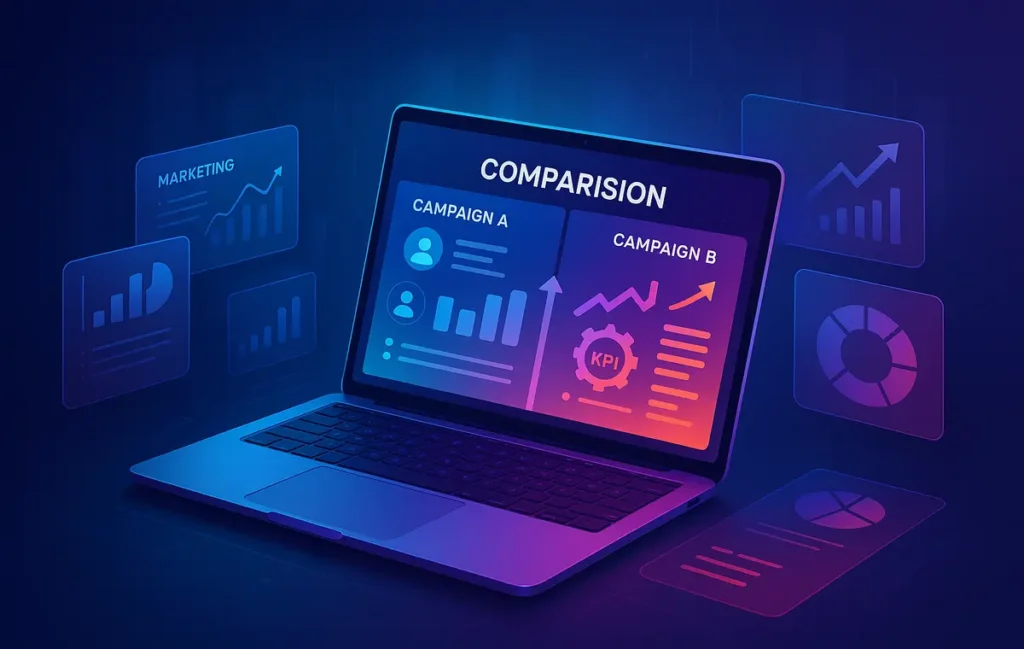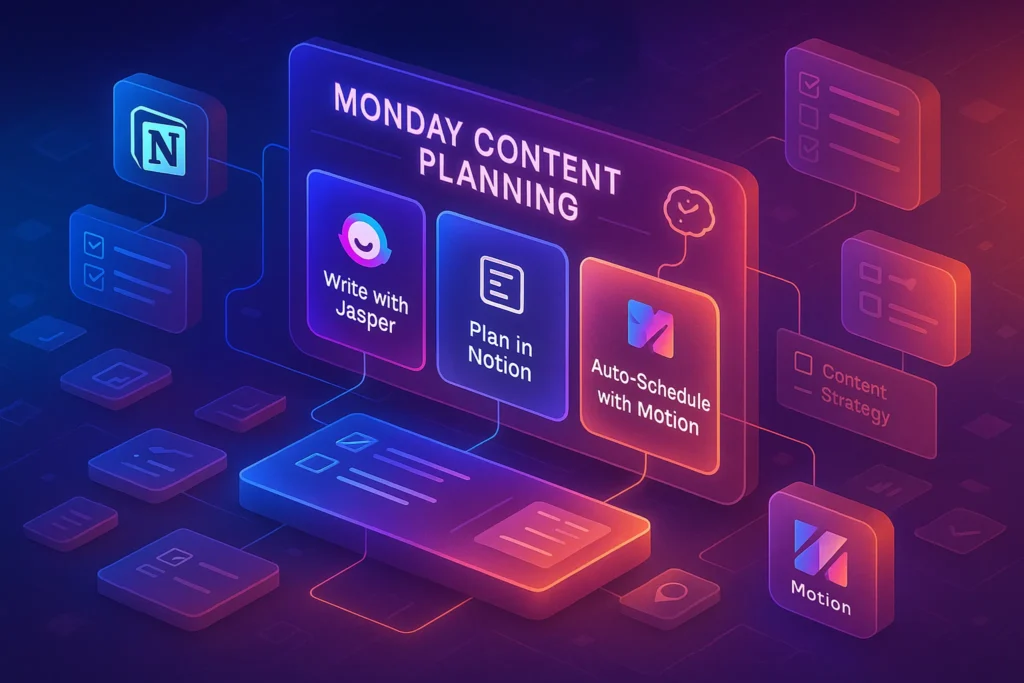🚀 Why Infographics Still Matter in Marketing
In a digital world saturated with text, infographics continue to stand out as one of the most effective forms of content marketing. They combine visuals and data in a way that is both digestible and shareable, making them highly effective for grabbing attention in crowded feeds. Studies show that people are 65% more likely to remember information when it’s paired with a visual, compared to text-only formats.
For marketers, the value goes beyond aesthetics. Infographics can drive higher engagement on social platforms, increase backlinks when used in blog posts, and even improve conversion rates when embedded in landing pages. The balance between storytelling and design makes infographics a format that keeps performing, even in the age of AI-generated content.
💡 Nerd Tip: If your content takes more than 30 seconds to explain, try turning it into an infographic.
📈 Why Infographics Work for Marketers
Infographics thrive in marketing because they satisfy two crucial audience needs: clarity and speed. In an environment where the average online attention span is less than 9 seconds, delivering data in a clean, visual format ensures your message doesn’t get lost.
Marketers use infographics to simplify complex ideas, turning dense reports into engaging visuals that clients, customers, or stakeholders can immediately understand. They also work brilliantly on social media because they are 30 times more likely to be read than text-only content, and users are far more likely to share them, which creates organic reach.
From boosting SEO with backlinks to improving ad CTR, infographics continue to outperform plain text. When combined with the right infographic maker tools, marketers don’t just create visuals—they create assets that persuade. For a foundational breakdown of what makes infographic design effective, check Designing Infographics where we covered the psychology behind visuals.
🎯 What Makes a Template Perform?
Not every template drives results. The difference between a design that looks nice and one that performs comes down to a few critical factors.
First is clarity and readability. A performing template avoids clutter, uses a logical hierarchy, and ensures the message can be understood in seconds.
Second is brand consistency. Infographics that align with a company’s color palette, fonts, and tone strengthen brand recall. This turns a simple design into a trust-building asset.
Third is data-driven design. Templates that make space for statistics, charts, or KPIs resonate more strongly in marketing campaigns because they bring credibility to the content.
Finally, mobile-friendliness matters. Over 60% of infographic views now happen on mobile devices, so templates must adapt to smaller screens without losing readability.
💡 Nerd Tip: Test your infographic template on a phone before publishing—it’s where your audience is most likely to see it.
🛠️ Top Infographic Makers for Marketers
Canva
Canva remains the most popular infographic maker because of its massive template library and drag-and-drop editor. Marketers love it for speed, flexibility, and collaboration. With templates optimized for social, blogs, and ads, Canva is a natural starting point.
-
Pros: Huge template library, easy for teams, brand kit integration.
-
Cons: Templates can feel overused if not customized.
For a deeper dive into Canva’s strengths and weaknesses compared to competitors, check Canva vs Adobe Express.
Venngage
Venngage specializes in data-focused infographics, offering charts, graphs, and visual reports designed for marketers who need to present insights. It’s excellent for reports, whitepapers, and B2B marketing.
-
Pros: Strong in data visualization, professional templates, export options.
-
Cons: Limited free tier, less suited for highly creative visuals.
Piktochart
Piktochart blends simplicity with power, making it ideal for SMB marketers who need infographics fast. It excels in transforming spreadsheets into visuals without technical effort.
-
Pros: Great for non-designers, data-to-visual pipelines, solid template range.
-
Cons: Customization is less advanced than Canva or Visme.
Visme
Visme goes beyond infographics, offering interactive templates, animations, and presentation-style designs. For marketers who want to embed interactive visuals on landing pages, Visme is a strong option.
-
Pros: Interactive features, advanced customization, robust analytics.
-
Cons: Steeper learning curve, higher pricing tiers.
💡 Nerd Tip: Don’t settle for the first template. Customize brand colors and icons so your infographic stands apart from stock designs.
If you’re on a tight budget, check Free Alternatives to Canva for Quick Graphic Design for tools that still let you produce high-quality visuals.
📊 Template Types That Convert
Some templates consistently deliver higher engagement and conversions.
-
Timeline Infographics work well for product launches or campaign storytelling. They show progression, which keeps audiences engaged.
-
Comparison Infographics help simplify choices, perfect for product marketing or side-by-side feature breakdowns.
-
Process Infographics are great for explaining workflows, tutorials, or onboarding sequences.
-
Data-heavy Infographics showcase statistics and KPIs, ideal for thought-leadership content or reports.
💡 Nerd Tip: Match the template type to your campaign goal. Timelines drive storytelling, comparisons drive decision-making, and data drives authority.
For marketers exploring broader content tools, Top 10 Content Creation Tools for Bloggers & Designers is a strong companion read.
📌 Case Study: Infographics That Increased CTR
A mid-size SaaS company running a content-driven lead gen campaign tested blog posts with and without infographics. Articles featuring infographics saw a 23% higher click-through rate on CTAs and a 42% increase in social shares.
By using a simple comparison infographic created with Venngage, the team illustrated the cost difference between their solution and competitors. That one graphic became the campaign’s most shared asset on LinkedIn, and the CTR spike carried through to conversions.
This proves that infographics aren’t just pretty visuals—they’re conversion tools when aligned with messaging.
🧩 Implementation Guide for Marketers
The roadmap for creating performance-driven infographics is straightforward but requires discipline.
-
Choose the right template. Start with a design that matches your campaign goal, whether storytelling, comparison, or data delivery.
-
Customize for brand alignment. Replace default colors, fonts, and icons with brand-specific assets to boost recognition.
-
Test before launch. Preview on both desktop and mobile, and gather feedback from colleagues to ensure clarity.
-
Publish strategically. Infographics perform best when embedded in blogs, repurposed for social, and included in email campaigns.
💡 Nerd Tip: Repurpose one infographic across multiple channels—it can live as a blog visual, LinkedIn carousel, and email header.
For marketers who struggle with advanced tools like Photoshop, see Graphic Design Tools for Bloggers Who Don’t Want to Learn Photoshop for easy alternatives.
⚡ Ready to Design Infographics That Convert?
Explore marketer-friendly infographic tools like Canva, Venngage, and Visme. Build visuals that don’t just look good—they perform.
📊 Benchmark & Data Insights
Performance-driven infographics aren’t just theory; the numbers back them up. According to the Content Marketing Institute’s 2024 survey, campaigns featuring infographics reported a 12% higher year-over-year traffic growth compared to campaigns that relied on text-heavy content alone. HubSpot’s internal data also revealed that infographics are shared on social media three times more often than any other form of content.
Marketers also report measurable impacts on conversion. A 2023 study showed that landing pages with at least one infographic had an average 15% higher CTR on calls-to-action compared to plain-text versions. This isn’t just vanity metrics—these improvements translate directly into leads, sales, and revenue.
💡 Nerd Tip: Always tie your infographics back to campaign KPIs. Shares and likes are nice, but CTR and conversions are the true ROI markers.
📐 Generic Templates vs. Marketing-Optimized Templates
Not all infographic templates deliver equal results. Many free or generic templates look visually appealing but fail to serve marketing objectives. Here’s how they compare:
| Template Type | Engagement | CTR Impact | ROI Potential |
|---|---|---|---|
| Generic Templates | High initial visual appeal but low brand alignment | Minimal impact due to lack of focus on data or messaging | Limited—often superficial engagement |
| Marketing-Optimized Templates | Designed for clarity, brand consistency, and data integration | Significant lift in CTR (10–20% on average) | Strong—leads, conversions, and measurable revenue gains |
This distinction matters because marketers aren’t just creating graphics—they’re creating assets that must perform. A marketing-optimized template incorporates hierarchy, data space, and mobile readability.
💬 Voices from the Field
Real-world voices highlight the true value of infographic makers. Marketers regularly share on X how infographics have changed their campaigns:
“Our LinkedIn engagement doubled after using comparison infographics. They simplified the decision for prospects.” – @growthmarketerX
“We ran A/B tests on our landing page. The version with a data-driven infographic boosted CTR by 18%. Never going back to plain text CTAs.” – @contentstrategist
Hearing from practitioners makes it clear: templates that perform aren’t abstract design ideas—they directly impact marketing outcomes.
🚀 The Future of Infographic Marketing
The next wave of infographic design is being powered by AI. Emerging tools are starting to auto-generate infographic drafts from raw data or blog posts, saving marketers hours of manual work. Instead of picking a template and building from scratch, these AI-driven makers suggest optimized layouts based on campaign goals—lead gen, storytelling, or authority building.
Imagine uploading a case study spreadsheet and having an AI tool instantly produce a timeline infographic with your brand colors, optimized for both desktop and mobile. This future isn’t far away. Early experiments with AI-assisted design are already showing up to 25% faster creation times and improved template relevance.
💡 Nerd Tip: Keep an eye on AI-native infographic makers—early adopters will save design time and get access to templates optimized for conversions, not just aesthetics.
🧮 A Simple ROI Calculator for Infographics
To justify infographic tools to stakeholders, marketers need a way to calculate ROI. Here’s a simple formula:
(Increase in CTR × Average Campaign Revenue) – Infographic Tool Subscription Cost = Net ROI
For example, if a landing page normally generates $5,000 in revenue per campaign with a 2% CTR, and an infographic boosts CTR to 2.4% (a 20% increase), that campaign now generates $6,000. Subtract $50 for the tool subscription, and the net ROI is $950 extra revenue from a single infographic-enhanced campaign.
This kind of clear math shifts the conversation from “nice visuals” to “hard numbers,” which is exactly what executives and clients want to see.
💡 Nerd Tip: Always benchmark CTR or engagement before and after using infographics—data is your strongest ally in proving value.
📬 Want More Smart AI Tips Like This?
Join our free newsletter and get weekly insights on AI tools, no-code apps, and future tech—delivered straight to your inbox. No fluff. Just high-quality content for creators, founders, and future builders.
🔐 100% privacy. No noise. Just value-packed content tips from NerdChips.
🧠 Nerd Verdict
Infographics remain one of the few content formats that consistently balance storytelling, data delivery, and conversion potential. With the right tools and templates, marketers can move beyond simple graphics and create assets that perform across multiple channels.
NerdChips believes marketers who treat infographics not as design add-ons but as strategic conversion drivers will see measurable ROI, stronger engagement, and better brand recall.
❓ Nerds Ask, We Answer
💬 Would You Bite?
Which infographic template do you think would resonate most with your audience—data-driven or storytelling?
Drop your thoughts below and share why. 👇
Crafted by NerdChips for creators and marketers who turn ideas into visuals that drive results.



